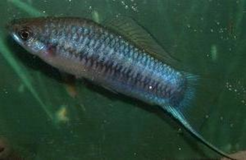Genomic basis of alternative life-history evolution in swordtail fishes

Abstract In some species of live-bearing fish of the genus Xiphophorus males become sexually mature at different sizes. These size differences result in differences in mating strategies that these males deploy. Females tend to prefer to mate with larger males, and larger males court females. But smaller males persist in the populations although they are at a disadvantage compared to larger males and small males sneak copulations by coercing females to mate without courtship.
We are interested to better understand the genomic basis of the differences in the onset of sexual maturity in these species. The research would involve QTL analyses and comparative transcriptomic work combined with behavioral and field work in Central America.
Keywords Mating behavior, population genomics, QTL mapping, Central America
Main advisor Axel Meyer, University of Konstanz
Lampert et al. 2010. Determination of onset of sexual maturity and mating behavior by melanocortin receptor 4 polymorphisms. Current Biology 20: 1929-1734.
Jones, J.C., Fan, S., Franchini, P., Schartl, M. and A. Meyer. 2013. The evolutionary history of Xiphophorus fish and their sexually selected sword: a genome-wide approach using restriction site-associated DNA sequencing. Molecular Ecology 22: 2986–3001.
